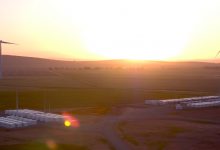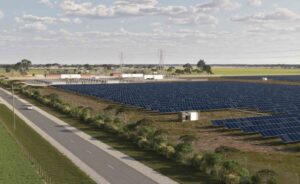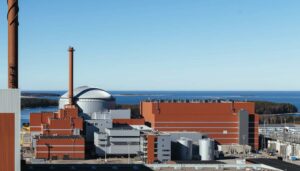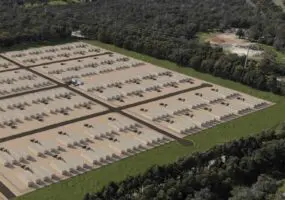French renewable energy developer Neoen says it has completed the expansion of the so-called Tesla big battery at Hornsdale in South Australia, and it will now begin to provide crucial inertia services to the grid from its expanded capacity.
The battery – officially known as the Hornsdale Power Reserve, and located to the Hornsdale wind farm complex north of Adelaide – became the world’s biggest lithium-ion battery when it was opened in late 2017 with a capacity of 100Mw/129MWh.
It was built in less than 100 days -as promised by Tesla boss Elon Musk – and has delivered a mix of grid security, frequency control and arbitrage services that have helped keep the lights on, cut more than $150 million in costs to consumers, and also delivered a handsome return to Neoen.
The battery has now been expanded to 150MW/194MWh, with much of the new capacity focused on delivering “inertia” – a critical grid service that will be delivered for the first time at this scale by a battery, and which will help reduce the need to keep operating gas generators as the state’s grid transitions from more than 50 per cent renewables towards the state Liberal government target of “net 100 per cent renewables.”
The expanded battery, however, will lose the title of “world’s biggest” because an even bigger installation has now been installed in California, and even bigger batteries are proposed in both the US and Australia.
The Hornsdale expansion has been largely funded by South Australian state government, and the Clean Energy Finance Corporation and the Australian Renewable Energy Agency.
Neoen says the enhanced storage capacity and its new capabilities will deliver even more benefits to consumers – including through its ability to bring forward higher share of renewables.
“We are thrilled to announce the completion of the expanded 150 MW Hornsdale Power Reserve less than one year after its launch,” Louis de Sambucy, Neoen Australia’s Managing Director said in a statement.
“With this expansion and the commencement of grid-scale inertia testing, Neoen continues to lead the way in battery storage innovation and reinforces its contribution and commitment to South Australia’s 100% renewable energy target.”
State energy minister Dan van Holst Pellekaan, Minister for Energy and Mining said this would be the first large demonstration in the world of how batteries can provide system strength similar to traditional power generation.
“This is a cutting edge service which will help address our historic system security challenges and allow us to adopt more renewable energy.”
CEFC chief executive Ian Learmonth said the expanded battery would provide a model for other investors and developers “as they consider grid-related technologies, which can be delivered in a relatively tight timeframe.”
ARENA chief executive Darren Miller focused on the importance of showing that batteries are capable of providing inertia services and fast frequency responses to the grid, saying this would pave the way for potential regulatory changes and revenue streams to incentivise further grid scale batteries to be built across Australia.
Investors and battery storage developers note that battery storage in Australia has barely scratched the surface of what is possible, because so few of the services that it can provide are recognised by the market. The regulators and rule-makers are currently reviewing how the markets are constructed so that the full “value stack” of big batteries can be exploited and rewarded.
“We really appreciated Neoen’s collaborative approach throughout the connection process and look forward to working with Neoen to enable the optimal use of this world leading battery to support higher levels of renewable integration.” Alex Wonhas, AEMO’s Chief System Design & Engineering Officer, said in the statement.










